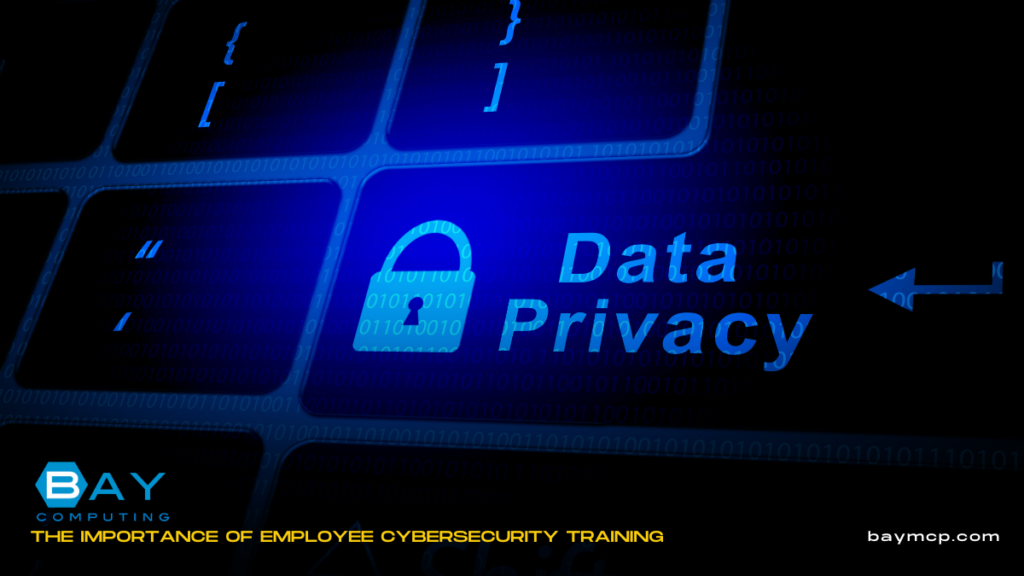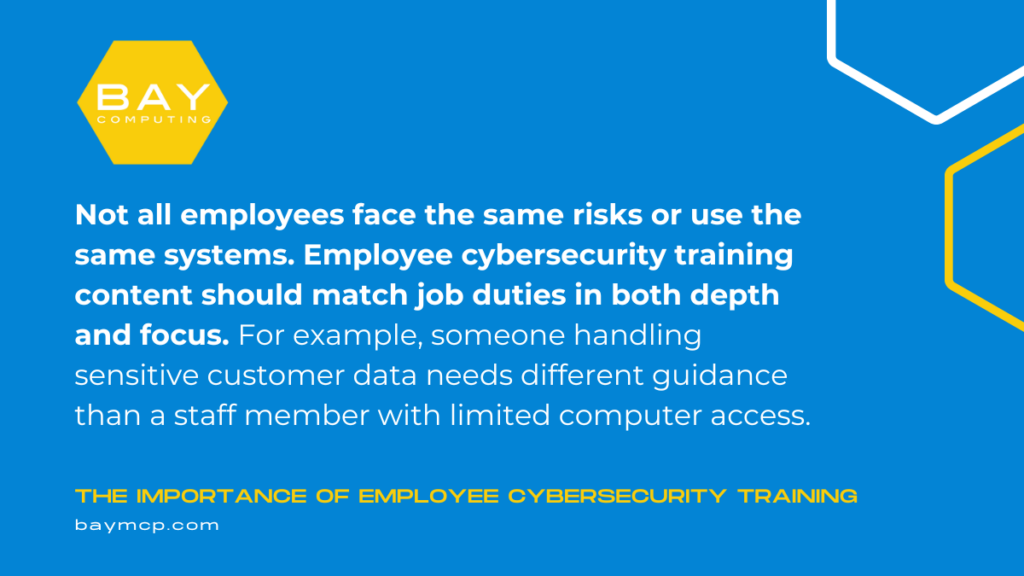The Importance of Employee Cybersecurity Training
Every business faces online threats. Hackers send scam emails, try to trick workers, and spread harmful software. One mistake can lead to problems like stolen information or costly repairs, which is why employee cybersecurity training is essential.
Employee cybersecurity training gives staff the skills to spot and respond to online dangers, reducing risks that technology alone cannot stop. This training helps employees understand their role in keeping the company safe. Simple actions, like not clicking suspicious links or handling private data carefully, can prevent many problems.
Companies that invest in strong cybersecurity training see fewer mistakes and better protection overall. Training also makes it clear to workers why their choices matter each day. Learn more about how security awareness programs empower staff to become the first line of defense.
Core Benefits of Employee Cybersecurity Training

Cybersecurity threats have become a daily challenge for companies of every size. Training employees to recognize and respond to these threats can greatly reduce risks, protect company data, and help foster a culture of safety at work.
Reducing Human Error and Security Breaches
Most cybersecurity incidents start with a simple mistake, like clicking a harmful link or sharing a password. Employees who receive regular training are less likely to fall for phishing emails or social engineering scams. This training helps workers pause and check before taking actions that could put the business at risk.
Common employee cybersecurity training topics include:
- Recognizing phishing attempts
- Using strong passwords
- Handling suspicious attachments and links
Learning these skills helps decrease the number of successful attacks caused by avoidable errors. Many organizations have found that ongoing education leads to a sharp drop in security incidents tied to human mistakes. Employee cybersecurity training is a key first line of defense for any business.
Building a Security-Focused Workforce
Training programs shape a workforce that values and understands security. Employees become more alert and ready to spot risks that might otherwise go unnoticed. This level of readiness means threats can be reported and stopped early, before they turn into bigger problems.
A security-minded team supports each other by following best practices every day. This creates an environment where questions about safety are welcomed and everyone shares responsibility for protecting digital resources. Putting security at the heart of work culture helps reduce accidental breaches and builds trust within the organization.
Workers are more likely to report issues when they feel informed and confident. Organizations that invest in training often see more engaged and responsible staff.
Safeguarding Sensitive Company Data

Most companies hold valuable data, from customer information to financial records. A single mistake could expose this data or make it available to cybercriminals. Employee cybersecurity training teaches team members how to handle sensitive data safely and avoid risky behaviors.
Key parts of this training cover:
- Safe data sharing methods
- Securing devices and workspaces
- Proper use of company resources
With the right knowledge, workers are less likely to leak or mishandle information. This reduces both accidental and intentional data breaches. Small and mid-sized businesses benefit greatly from employee cybersecurity training, since they often cannot recover from a single major data loss event.
Implementing Effective Employee Cybersecurity Training Programs
A strong cybersecurity training program gives employees practical skills to protect company data and systems. Effective programs focus on clear topics, consider the needs of different job roles, and track results to ensure learning sticks.
Key Topics to Include in Training
Training should cover a range of subjects to reduce security risks. Employees need to understand how to identify phishing emails, use strong passwords, and protect sensitive information. Handling suspicious attachments and recognizing social engineering tactics are also critical.
Other important areas include device security and secure web browsing. Teaching about the dangers of public Wi-Fi, data encryption, and the safe use of company devices is key. Employees should also learn the right steps to report incidents.
A checklist of essential topics includes:
- Phishing and email scams
- Password safety
- Device and network protection
- Incident reporting procedures
- Physical security of devices
Introducing real-world examples or short quizzes can help make the material engaging and easy to remember. Well-rounded training helps staff spot threats before they cause harm.
Tailoring Content to Various Roles

Not all employees face the same risks or use the same systems. Employee cybersecurity training content should match job duties in both depth and focus. For example, someone handling sensitive customer data needs different guidance than a staff member with limited computer access.
It is useful to group employees into categories like IT, executives, HR, and general staff. Each group should get training on the threats most relevant to their roles. IT staff might need to know about advanced threats and technical response, while HR should focus on privacy and data handling rules.
Adjusting content by role keeps the training practical. It also helps employees see why security matters in their daily work. Regular updates make sure everyone stays prepared for changing threats.
Measuring Employee Cybersecurity Training Success and Engagement
To know if a training program is working, it needs to be measured. Common ways to do this include quizzes, simulated phishing tests, and tracking who completes the training. Surveys can also give feedback about what employees find useful or confusing.
A simple way to track success is by using a table:
| Method | Purpose |
|---|---|
| Quiz scores | Check topic understanding |
| Simulated phishing | Test real-world recognition skills |
| Completion rates | Ensure all staff participate |
| Feedback surveys | Find areas to improve or clarify |
Regular analysis of results can show where to improve the program. High engagement and better test scores often mean the training is effective. It’s important to keep the content updated and make adjustments as threats evolve.
Empower Your Team. Protect Your Business.
Cybersecurity starts with your people. Don’t wait for a data breach to take action—investing in employee cybersecurity training today can significantly reduce human error, prevent costly data breaches, and build a strong culture of security within your organization. With the right knowledge, your team can become your first line of defense against phishing, malware, and other online threats. At Bay Computing, we help businesses implement effective, role-based training programs that empower staff to make smart, safe decisions every day. Contact us to get started on securing your business from the inside out.




